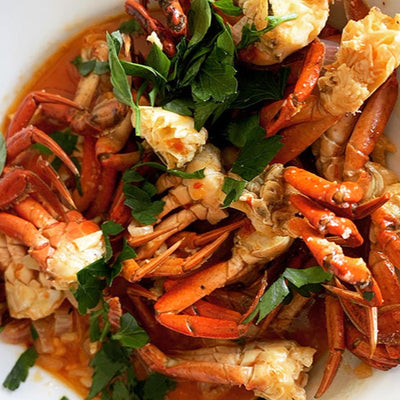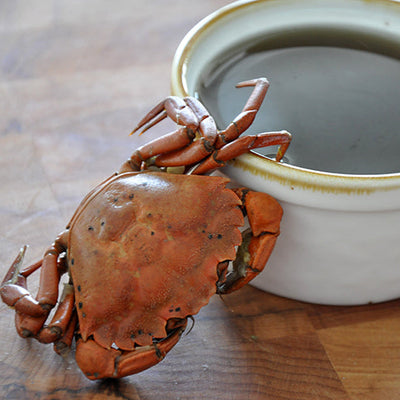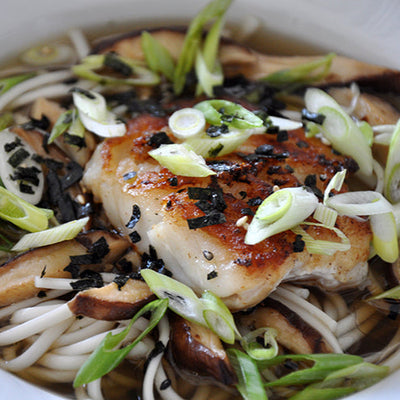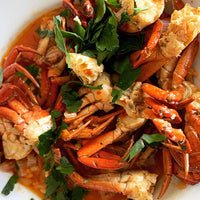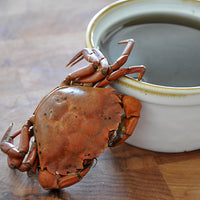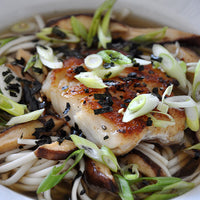The easiest and most versatile way to prepare green crabs is to simmer them into a stock that can be used as a base for soups, bisques, noodle dishes, risotto, or frozen in ice cube trays to add depth of flavor to pasta sauces, sautés and more.
To make a basic stock, rinse the frozen crabs in water to remove any residual sand and add them whole to a stock pot with water and aromatics like onion, garlic, fennel and celery. Simmer for as little as 45 minutes or up to four hours.
For more recipe and culinary guidance, visit
Greencrab.org
SAFE HANDLING — Keep frozen until ready to use. Remove from packaging and defrost in the refrigerator 8-10 hours before use. Do not defrost at room temperature. Once defrosted, do not refreeze and use within 3 days.




